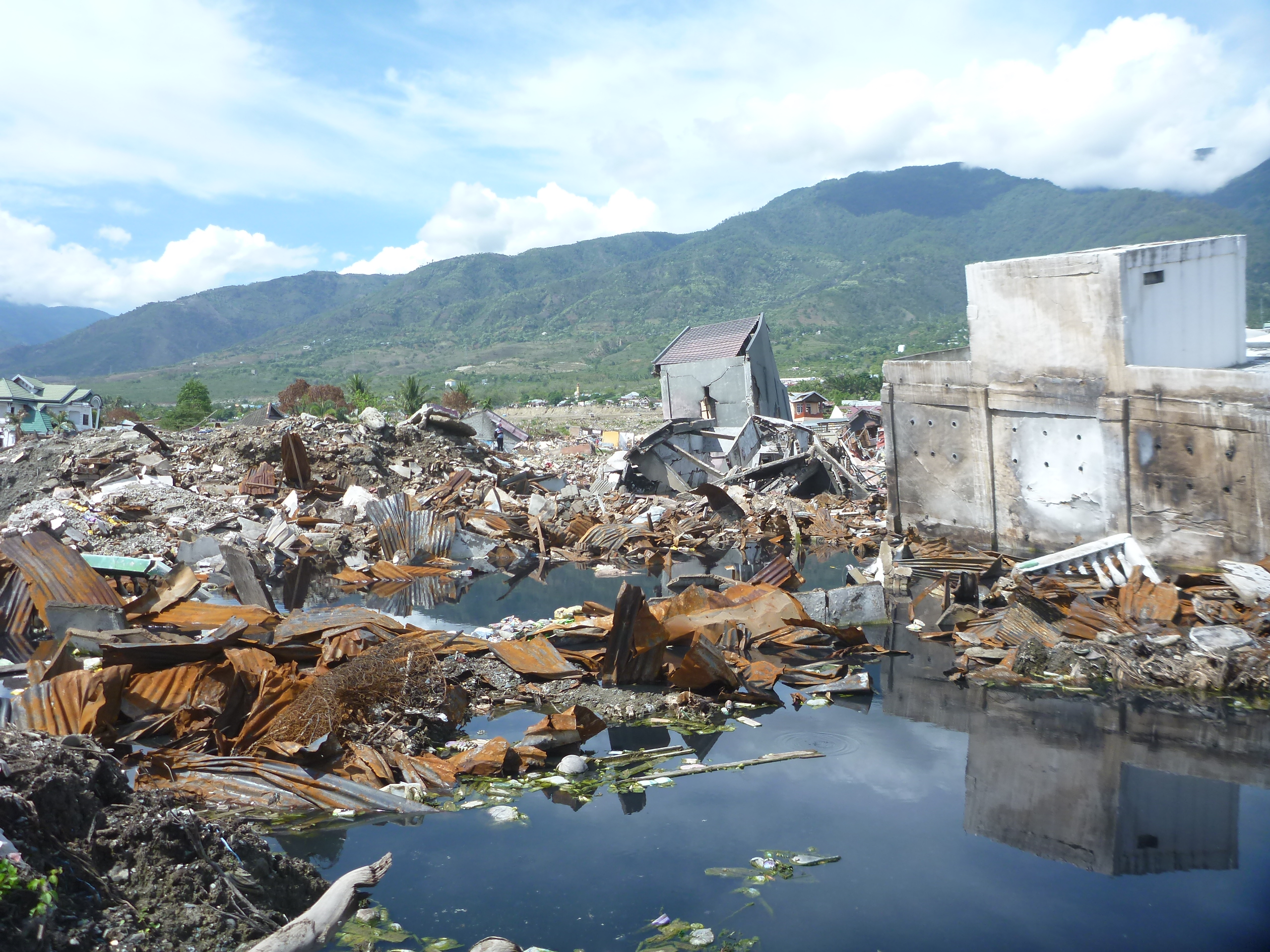Information about the Disaster & Map
・Date: September 28th, 2018
・Magnitude: 7.5
・Place: Donggala Regency, Central Sulawesi, Indonesia
・The number of casualities: 2,115
・Missing people: 1,309 (some information says 5,000)
・Injuries: 4,438
・Evacuees: 223,751
・Damaged buildings: 68,451
(From National Agency for Disaster Countermeasure in Indonesia October 26, 2018)
About our project
Creating a Place for Children through Traditional Architecture
CODE dispatched staff in November 2018 and January 2019 to conduct site visits and discussions with architect Rahmat and his team in the disaster affected area of Palu. In the affected areas, not only the damage caused by the earthquake tremors, but also the tsunami that reached the area in just a few minutes due to the undersea landslide caused by the earthquake and the massive liquefaction caused by ground subsidence had damaged extensively, including inland areas.
CODE decided to support Rahmat and his team’s efforts to rebuild temporary housing and community spaces using traditional wooden architecture. This method of construction is called “Tambi” or “Bantaya” and has been traditionally inherited by the Kairi hill tribe people. It is a combination of wood and bamboo, similar to the Japanese axis construction method. According to Rahmat, “Traditional construction is seismic isolated, resistant to earthquakes, inexpensive, cool, and easy to live in.
The district of Jonooge was hit by a massive liquefaction, and those who lost their homes moved to the neighboring village of Rangaleso. Therefore, a community space with traditional architecture was constructed in Langaleso Village. The community space will be used as a place for the relocated children of Jonooge and the local children of Langaleso, where they can sing, dance, read, and write.


〈Left〉 Liquefaction affected area 〈Right〉 Traditional architecture Bantaya
〈Above〉 Liquefaction affected area 〈Below〉 Traditional architecture Bantaya

